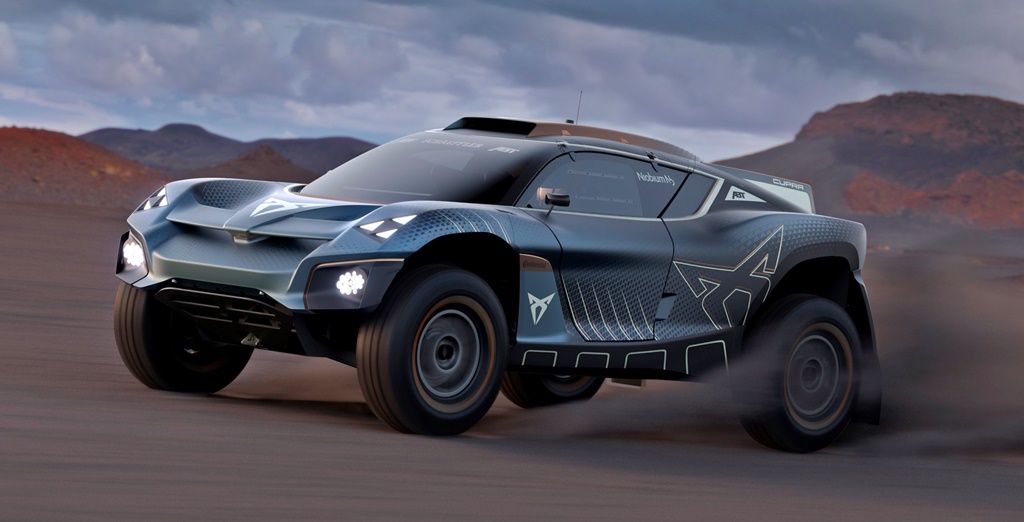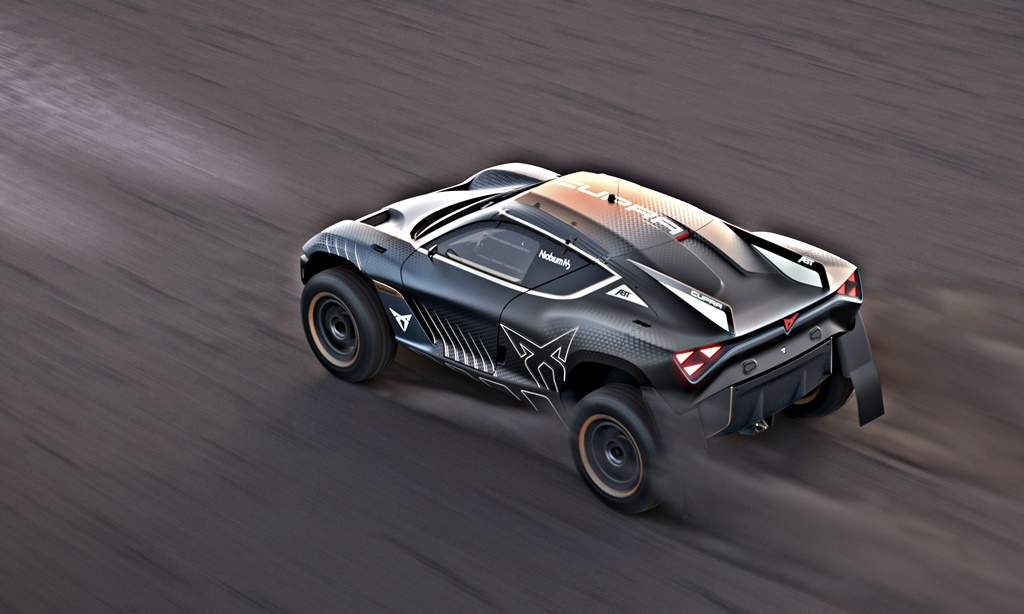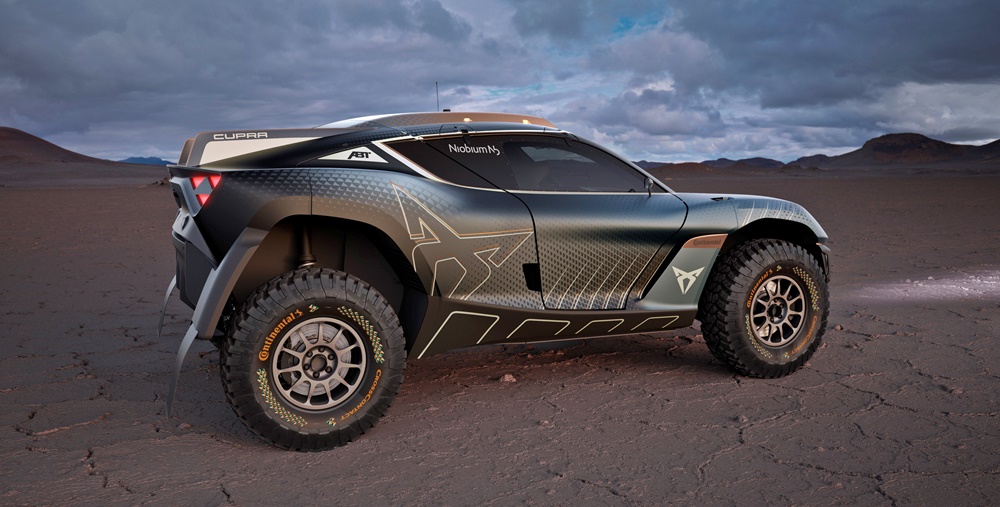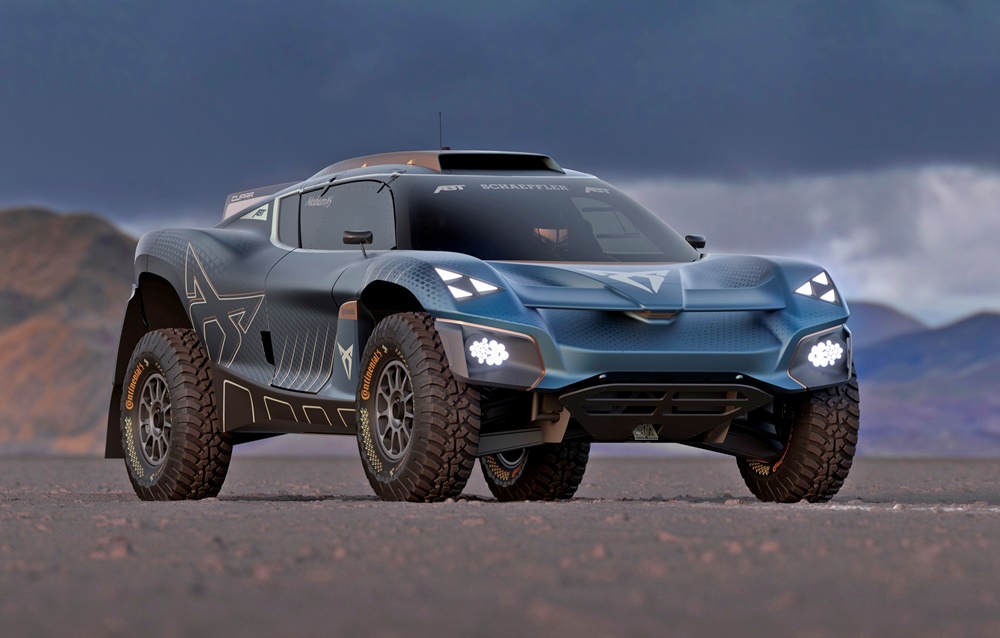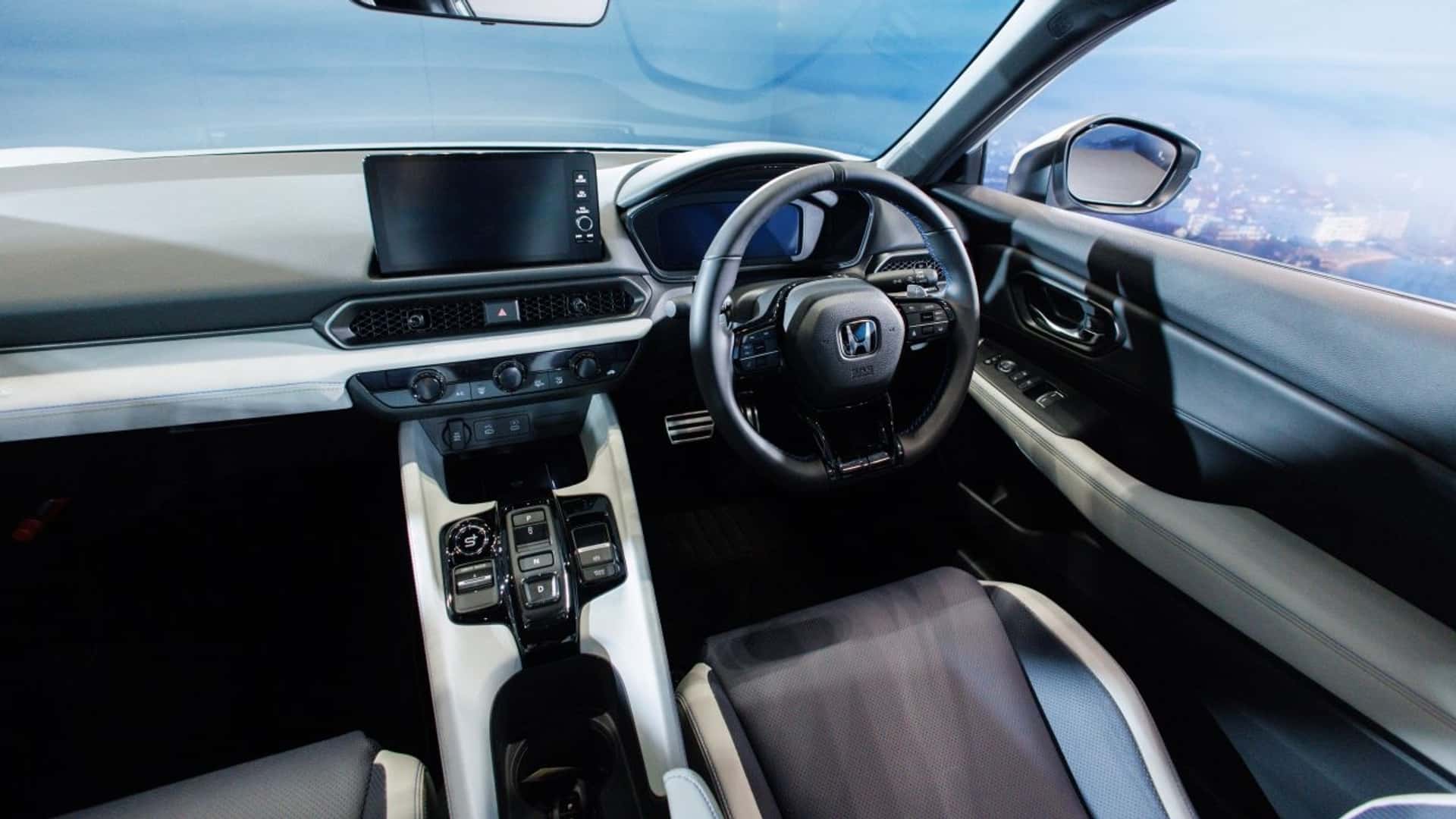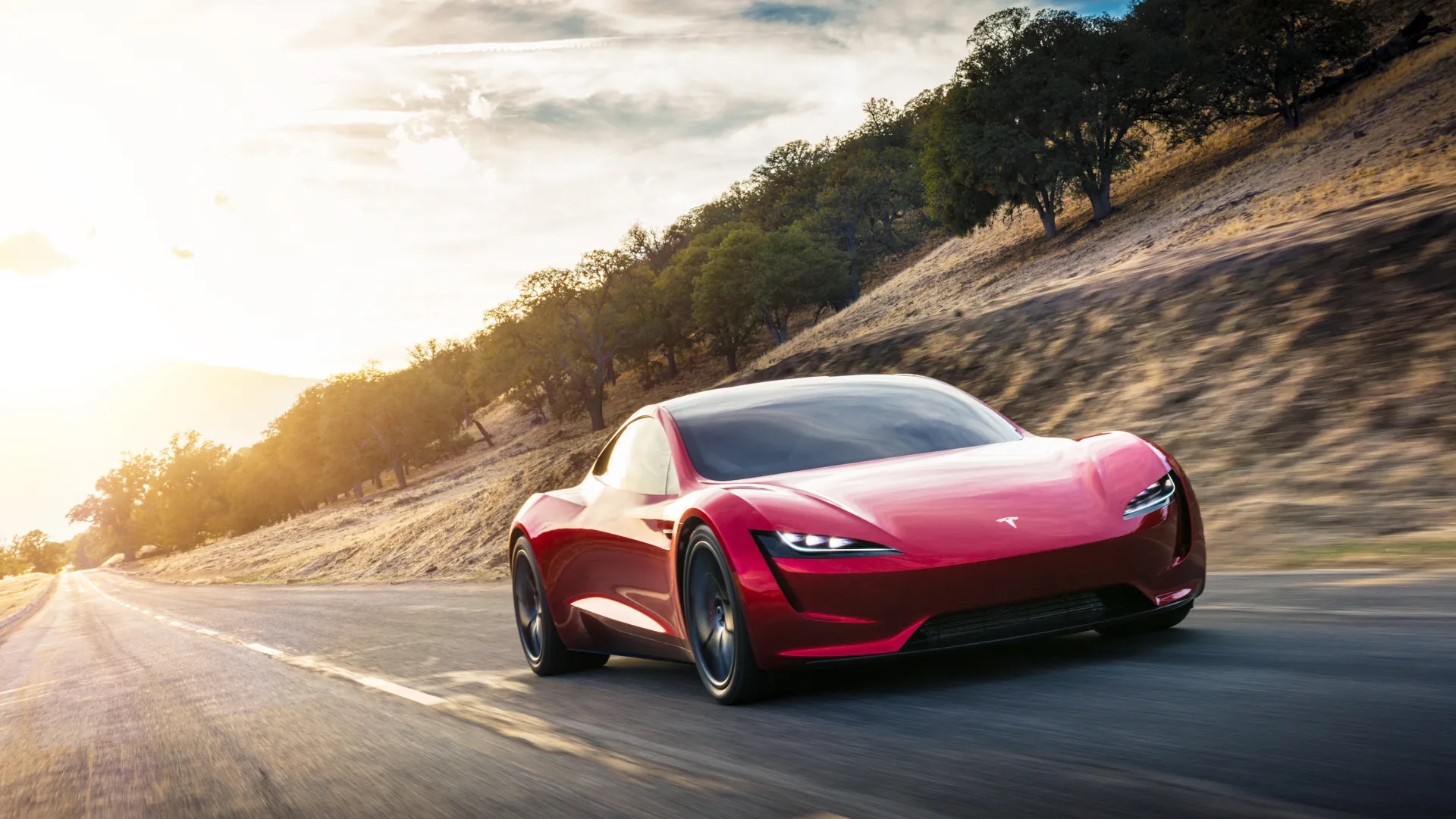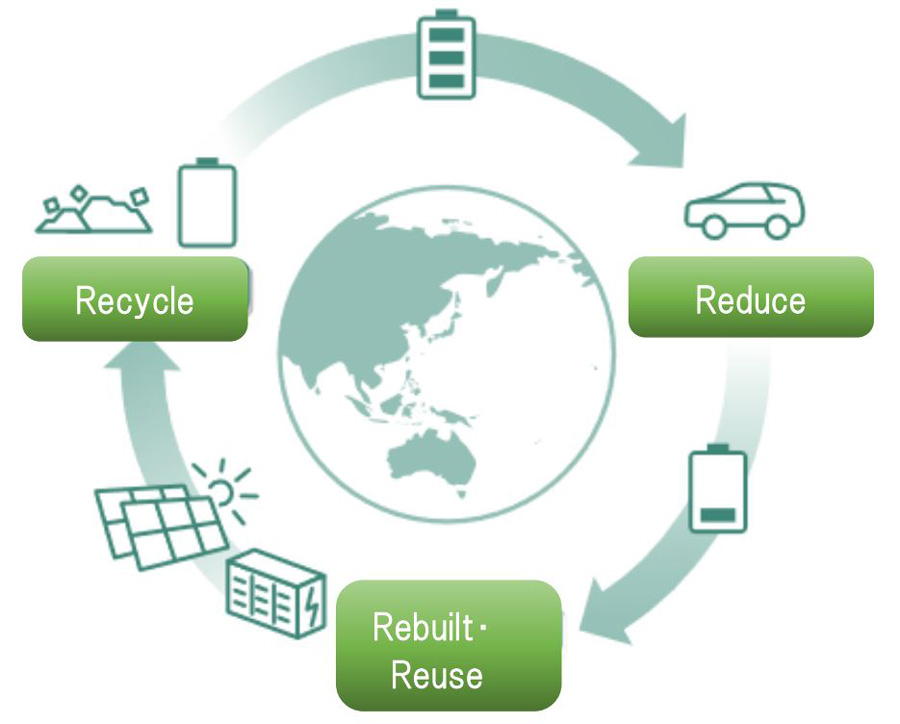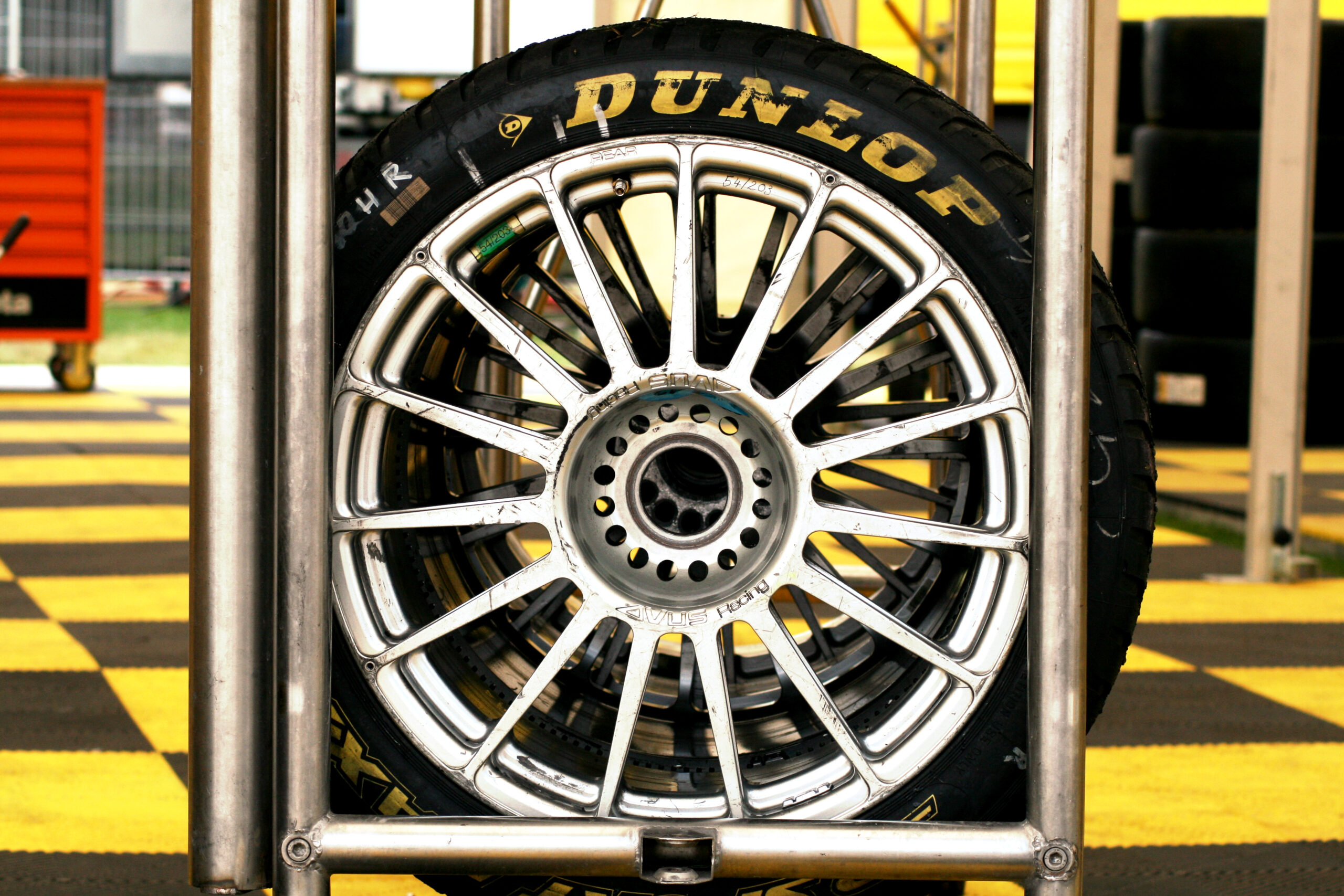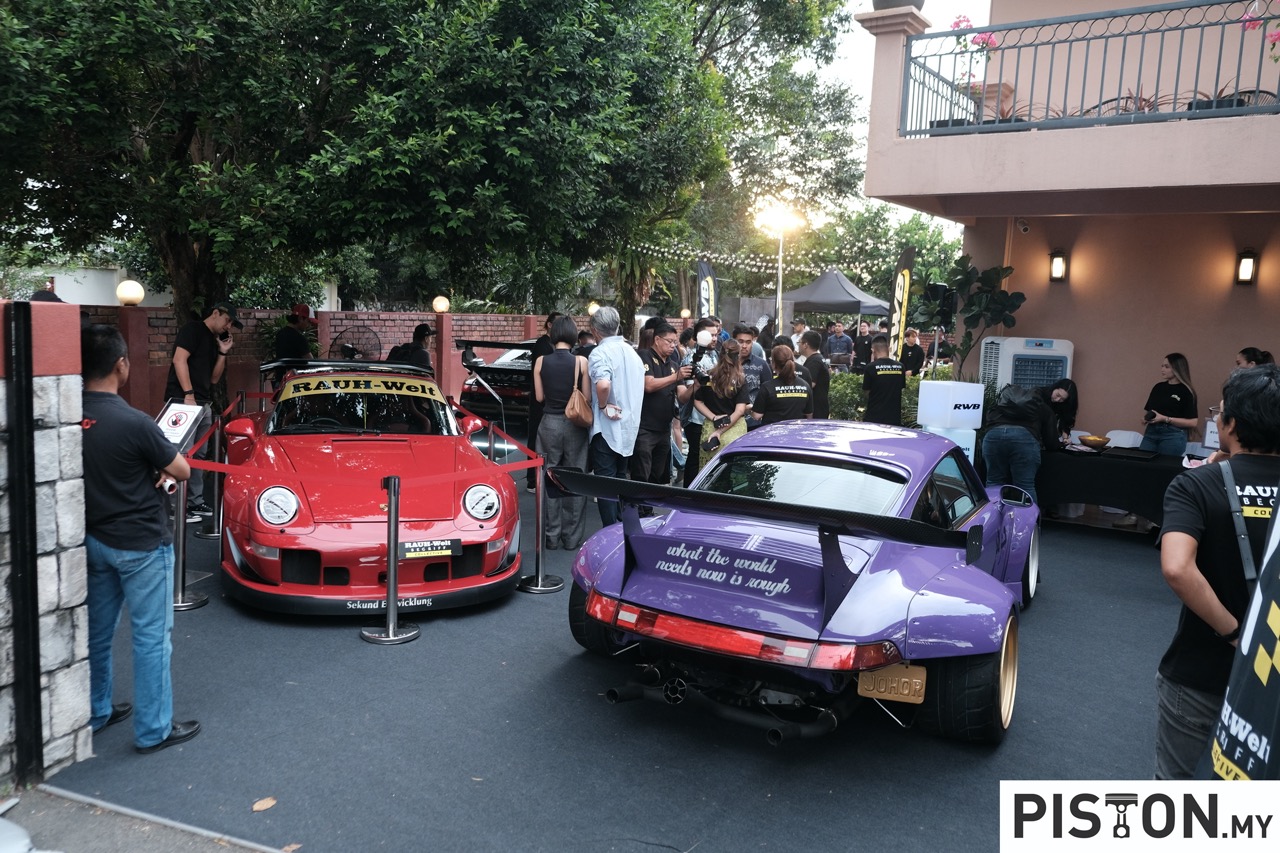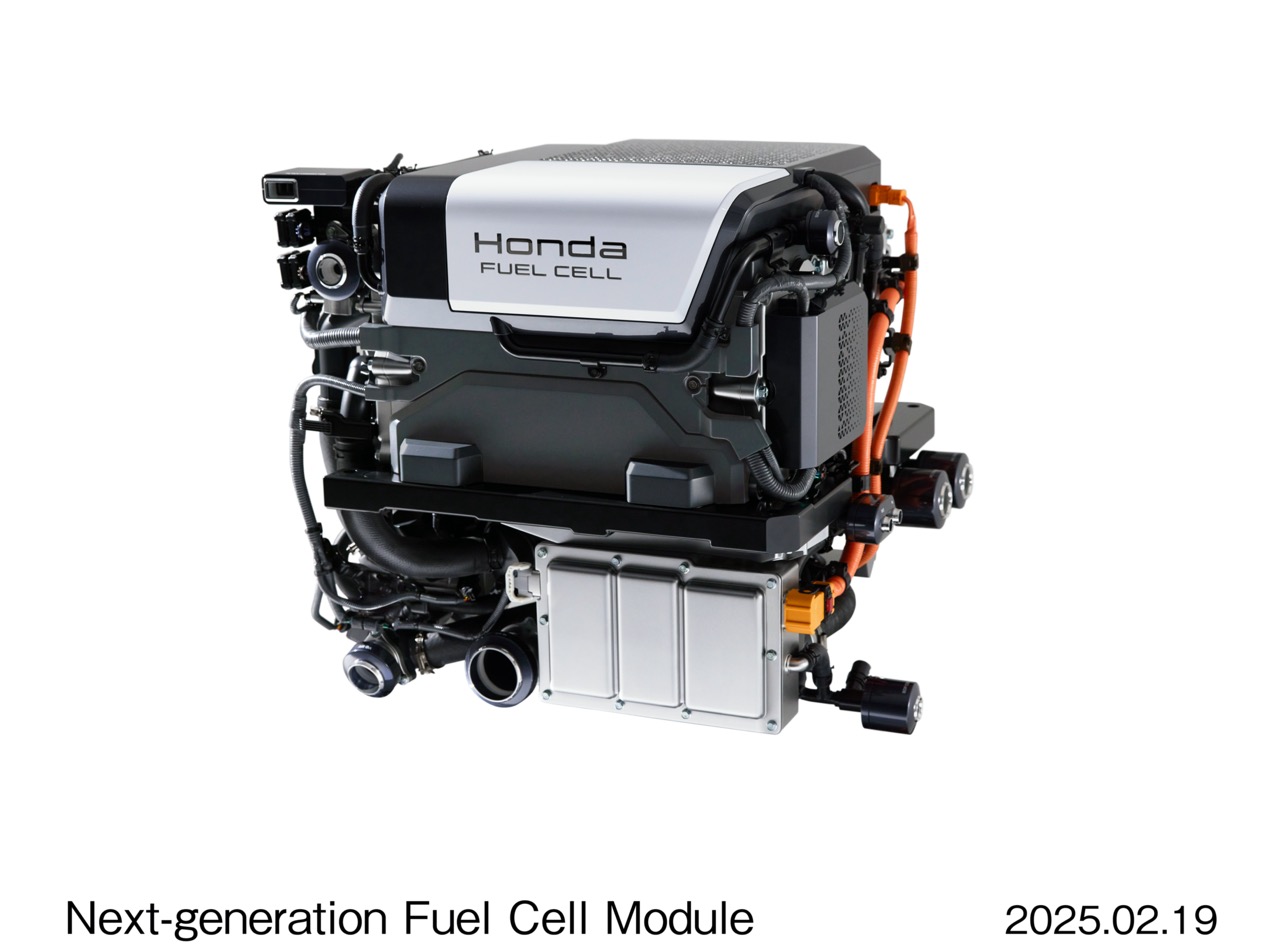CUPRA, the high-performance brand of Spanish carmaker SEAT, was the first carmaker to join the Extreme E all-electric off-road series that started this year, entering in partnership with ABT Sportsline. The 3-year old brand’s involvement is to enhance its R&D while promoting electrification, sustainability, and also gender equality (the series requires each crew to have one male and one female, both to having driving roles).
While the e-SUV used during the current season of Extreme E is one which is common for all teams, CUPRA is already looking ahead when it can develop its own machine. It will become the second manufacturer to use its own bodywork for its team, and Tavascan Extreme E Concept shows what the racing car will look like.
Future design language
It also hints at the design language to be used in the future production CUPRA Tavascan which will be the brand’s second fully electric model designed and developed in Barcelona, Spain and will reach the market in 2024.
“We strongly believe in the Extreme E project as a whole,” said Antonino Labate, Director of Strategy, Business Development and Operations at CUPRA. “Electrification, sustainability, gender-balance and diversity are common values between CUPRA and Extreme E. The CUPRA Tavascan Extreme E Concept is clear proof of the hard work that we’re doing at CUPRA in order to be able to compete next season.”
Completely redesigned exterior
The Tavascan Extreme E Concept integrates a completely new exterior design with 100% CUPRA DNA and a holistic approach to natural material use making it more sustainable, adaptable and easy to repair. The front and rear design has changed considerably from the vehicle that is racing in the first season of Extreme E.
LED technology delivers greater freedom to produce a vehicle with CUPRA DNA, with the headlights in groups of three triangles on either side providing a more imposing look. The LED lighting is set into a 3D-printed frame – a technology chosen to gain a competitive edge. The 3D-printed parts can be manufactured in just 6 hours, meaning the team can adapt to changes very quickly. Whether it’s because of an incident or changes to the light position, the components can be modified in a very short time without the need for cumbersome and expensive tooling.
3D-printed elements for bodywork
“The CUPRA Tavascan Extreme E Concept is the next evolution of our all-electric off-road racing car with even more CUPRA DNA and a design that hints at the brand’s future direction. But it also delivers technical advancement too,” said Head of Technical Development at CUPRA Racing, Xavi Serra. “The concept car uses flax fibres throughout the bodywork to improve sustainability and 3D-printed elements that can be quickly recreated to keep the race car out on the track.”
Constructing as much of the body structure as possible from flax fibres – extracted from the flax plant – reduces the use of carbonfibre components and the vehicle’s impact on the environment. The material can be worked in the same way, achieving the same shapes and radii required by engineers, and is a technology that could easily be adapted for production vehicles.
The e-SUV concept is finished with copper accents – a time-honoured CUPRA mark – parametric texturing and dynamized lines to help the exterior shimmer and move as the vehicle shifts through the landscape, and an overlapping CUPRA logo to create a powerful 3D effect.
“I am delighted to see CUPRA launch the Tavascan Extreme E concept as it enables it to become the second manufacturer to use its own bodywork for its Extreme E team. This move not only injects added style and personality into the series, but also supports our goals for Extreme E to prove itself as a global marketing showcase for partners, as CUPRA prepares to launch this model to consumers in the future,” said Alejandro Agag, Founder and CEO of Extreme E.

Extreme E Arctic X Prix: Like nothing the motorsport world has ever seen (w/VIDEO)




